Brook Green to Fulham Palace Gardens
Brook Green lies in between Shepherds Bush and Hammersmith. Although only a stone throw away from the very busy Hammersmith gyratory, it is a very green and well heeled part of the city. Do listen to Gustav Holst’s Planets Suite, to get you in the mood…
Brook Green
Brook Green is first mentioned in a document in 1493 as a tributary of the Thames, called Black Bull Ditch or Parr’s Ditch. It flowed in a U shape from Brook Green across 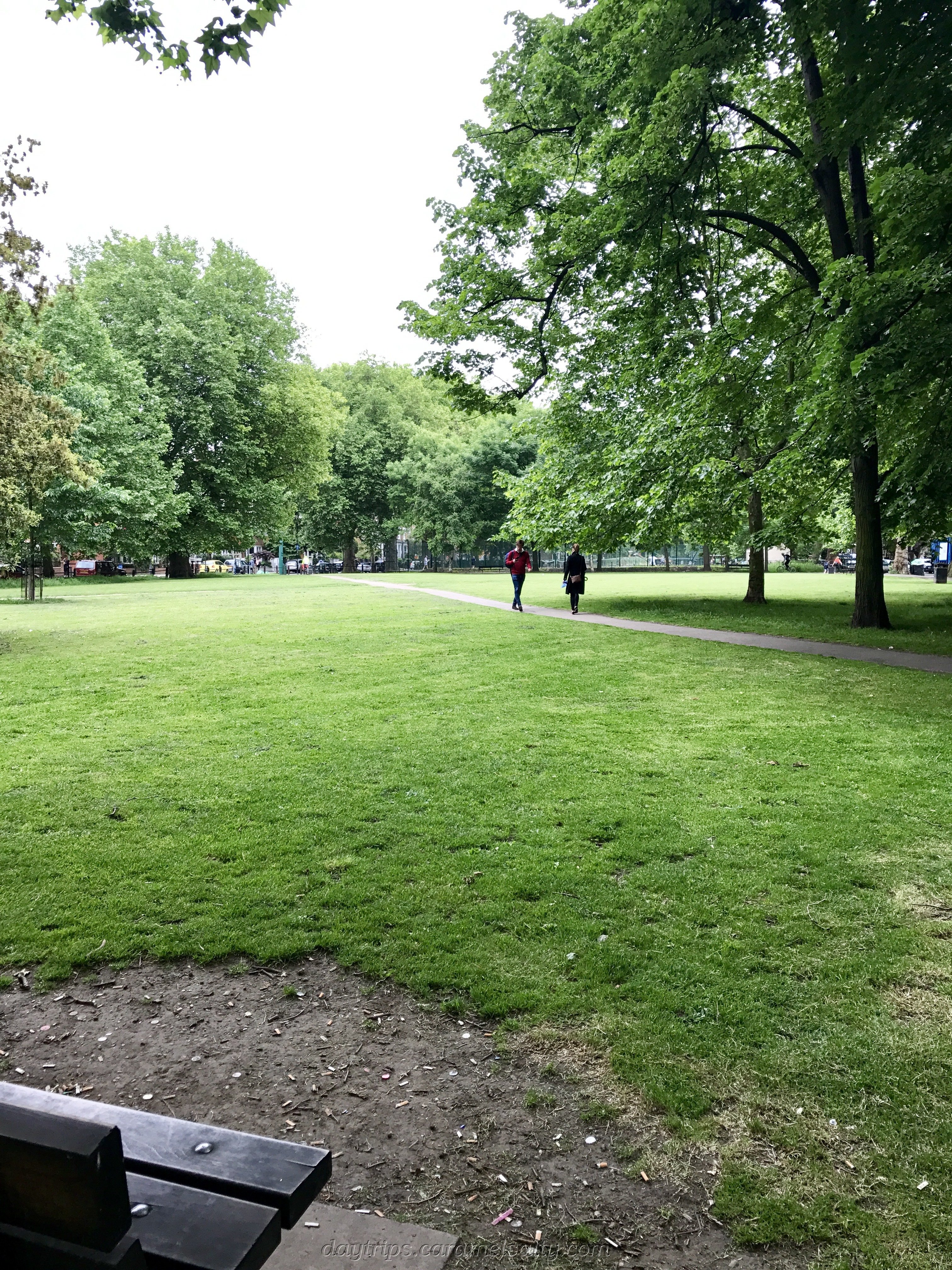 the than marshy green, traversing Talgarth Road (the A4) to then enter the Thames south of Chancellor’s Wharf (now the site of the Riverside Studios).
the than marshy green, traversing Talgarth Road (the A4) to then enter the Thames south of Chancellor’s Wharf (now the site of the Riverside Studios).
During the 18th and early 19th century the area was known for its market gardens, the most famous founded by James Lee and Lewis Kennedy on the site of a former vineyard, now Olympia. The men introduced hundreds of new plants to the United Kingdom, including standard roses and fuchsias, the latter discovered growing in a sailor’s garden in Wapping having been brought back by him from Chile.
By the late 18th century Parr’s Ditch was charmingly recorded as being “a 4ft wide ditch, constantly full of filthy water” which eventually became so polluted with waste from nearby brick fields that it was finally covered and converted to a sewer in 1876.
Victorian Sewage Pipes
The Thames had been a dumping ground for human and other waste for 100s of years. Consequently, London was a smelly city in the mid 19th century, with everything coming to a head in the summer of 1858 ( The Great Stink), when the strength of the stench literally brought the city to a standstill for weeks.
Joseph Bazalgette, and Sir Goldsworthy Gurney, were brought in to build a proper sewersystem to contain the waste, and to design a simple way to ventilate the gases 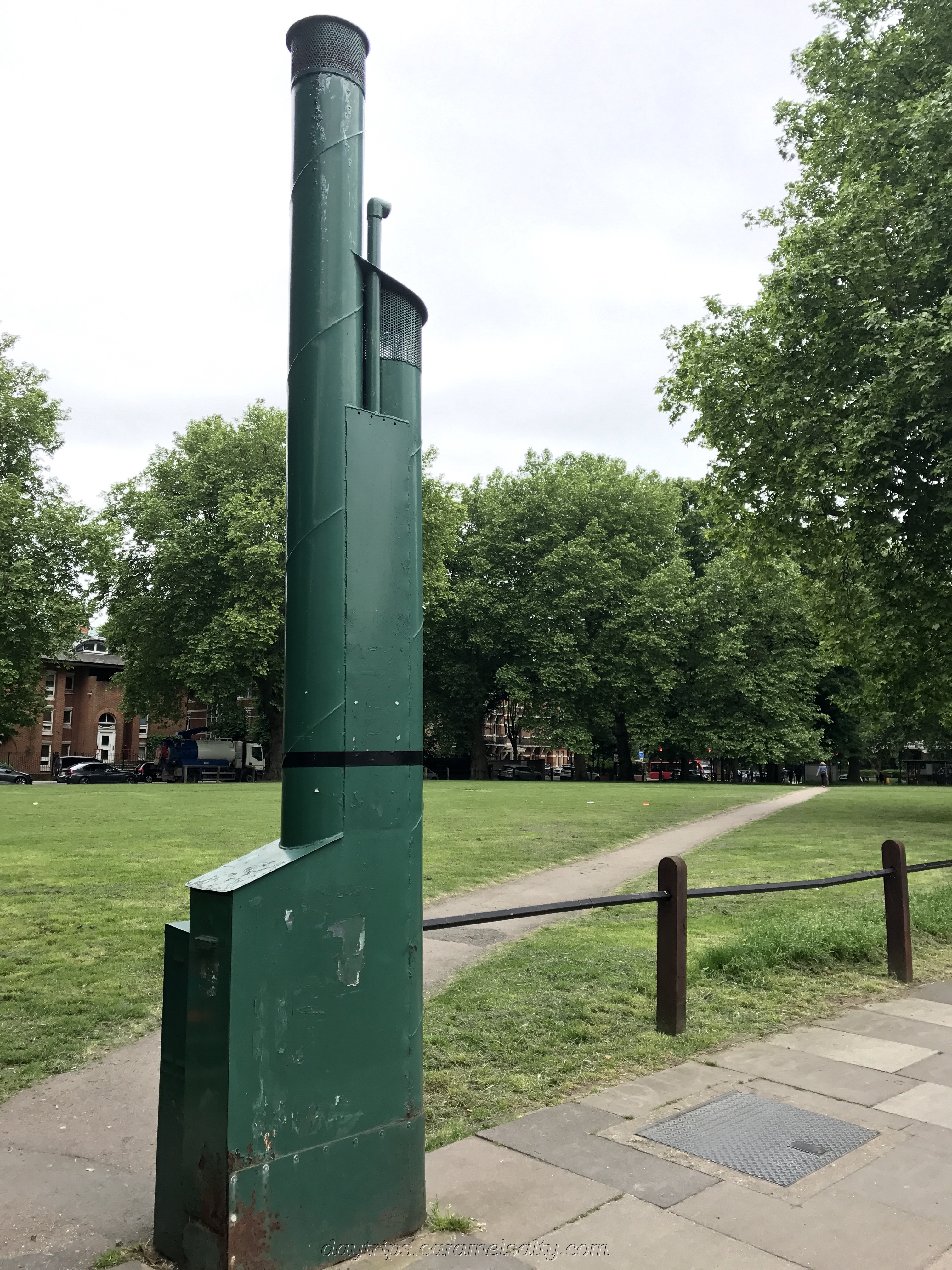 produced by its rotting. These hollow cast iron structures, usually painted grey or green and look a bit like street lamps, (known as Gurney’s stink pipes) were built to vent gasses, which could include a cocktail of methane, hydrogen sulphide and ammonia, from Victorian sewers deep underground to high above street level.
produced by its rotting. These hollow cast iron structures, usually painted grey or green and look a bit like street lamps, (known as Gurney’s stink pipes) were built to vent gasses, which could include a cocktail of methane, hydrogen sulphide and ammonia, from Victorian sewers deep underground to high above street level.
If you stand long enough by it, with the wind blowing in the right direction, you will eventually get a whiff of the escaping gases. These pipes can be found all over London, so next time you get a whiff, you’ll now know why.
Other Notable buildings and structures around Brook Green
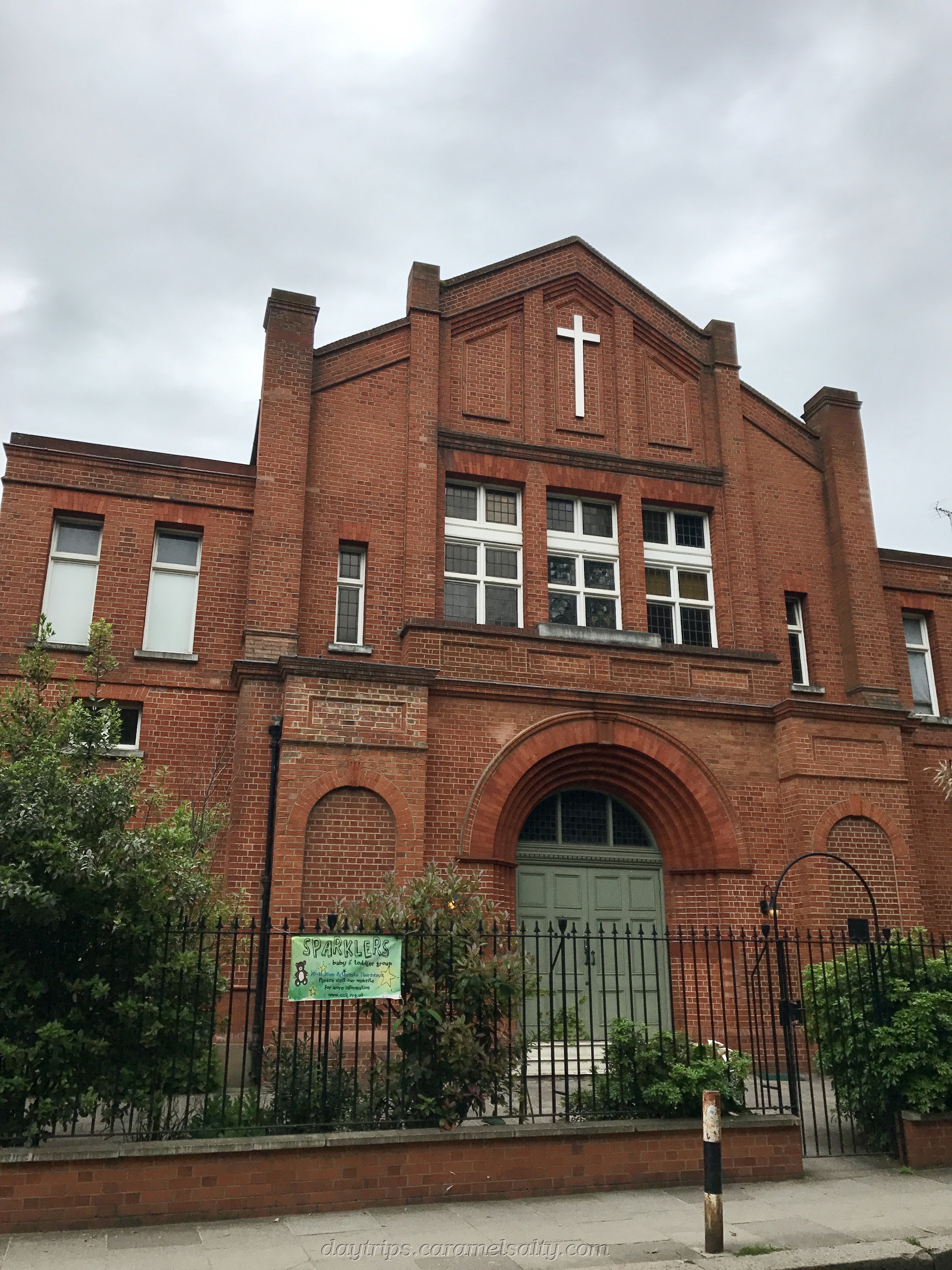 > This former synagogue is now home to the Chinese Church in London. You will need to stand by the side of the building to spot what would have been the original synagogue building, behind the modern red brick facade.
> This former synagogue is now home to the Chinese Church in London. You will need to stand by the side of the building to spot what would have been the original synagogue building, behind the modern red brick facade.
> #59 Brook Green, a ‘Queen Anne style’ house built in 1893 is now the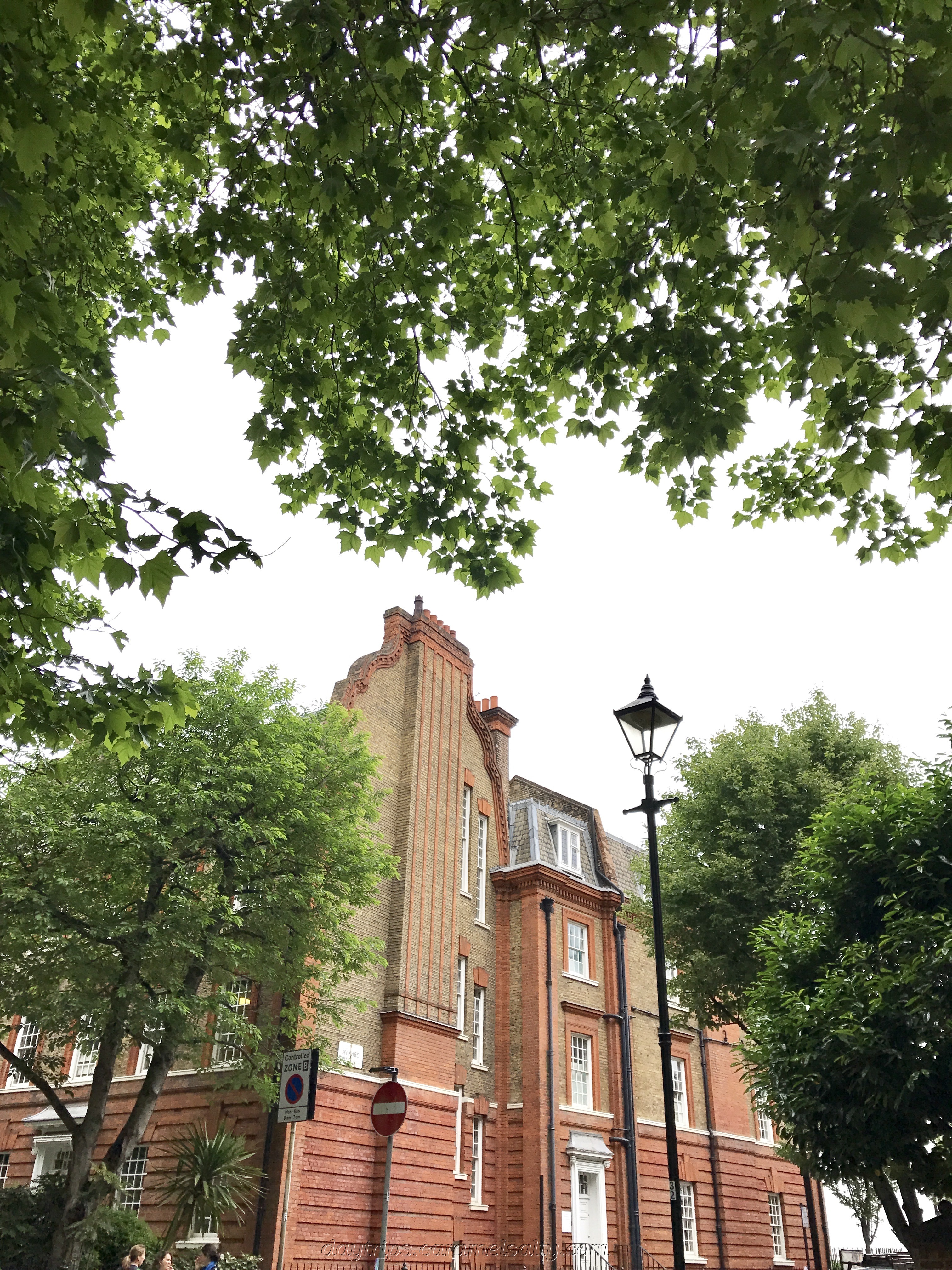 Ecole Française. The side of the building is quite impressive.
Ecole Française. The side of the building is quite impressive.
> Further down the Green, by the Holy Trinity Church, are two Grade II listed K2 kiosk, cast iron telephone boxes introduced in 1927. The church itself is built in the Victorian Gothic Revival style, and is  evidence of a strong Roman Catholic presence in this area since the 17th century. If open it is worth stepping inside.
evidence of a strong Roman Catholic presence in this area since the 17th century. If open it is worth stepping inside.
> St Paul’s Girls’ School, opened in 1903, is regarded as one of the best Edwardian school buildings in London. Gustav Holst wrote the Planets 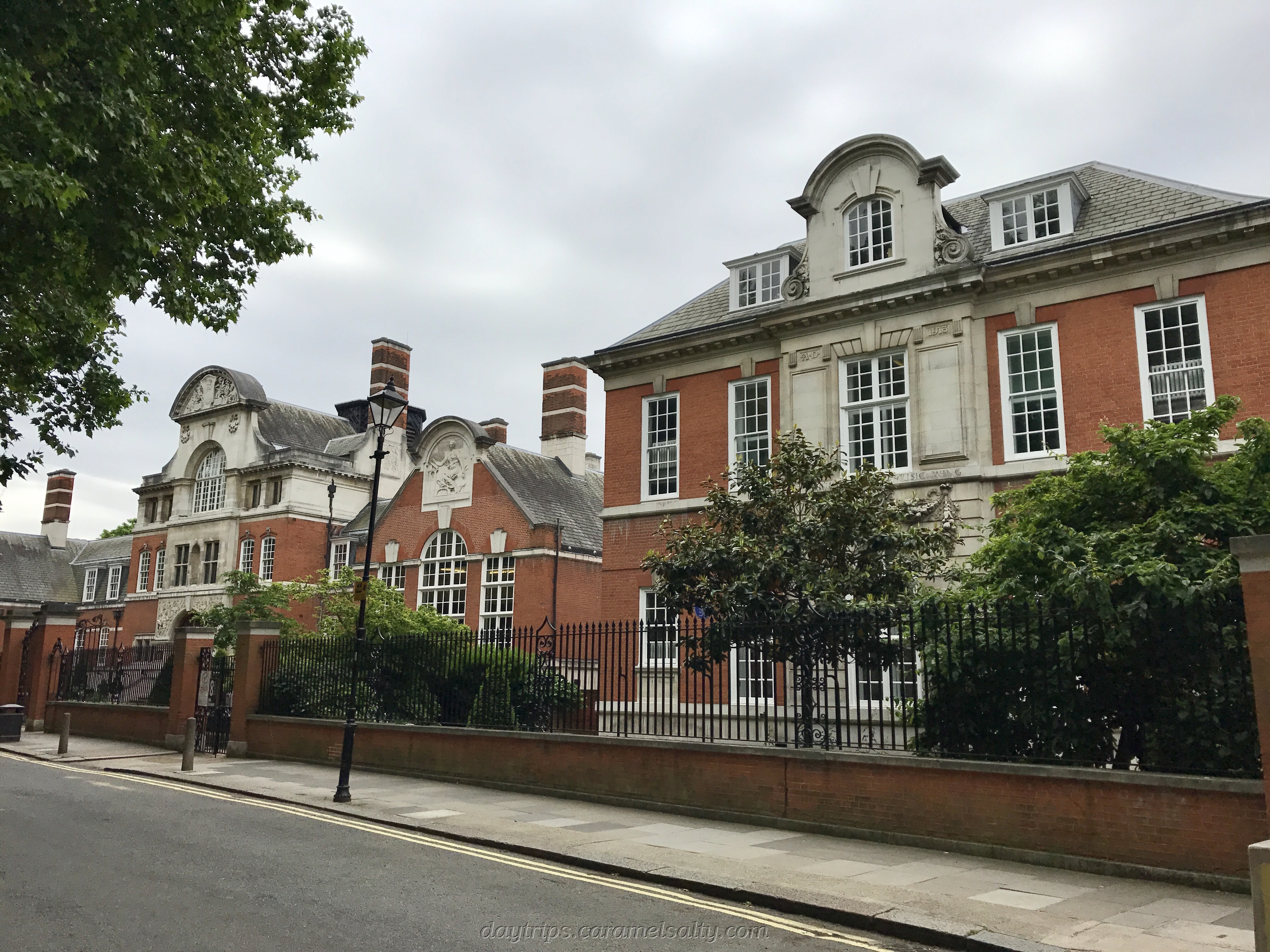 Suite and other pieces while he was Director of Music at this school. There is a school wing dedicated to him.
Suite and other pieces while he was Director of Music at this school. There is a school wing dedicated to him.
Continue along Brook Green to the busy Hammersmith Road. At the lights you will notice the beautiful 153 St Paul’s Hotel, a handsome gothic edifice of red brick and terracotta which was the House of the High Master of St. Paul’s School. It was built in a sixteen acre 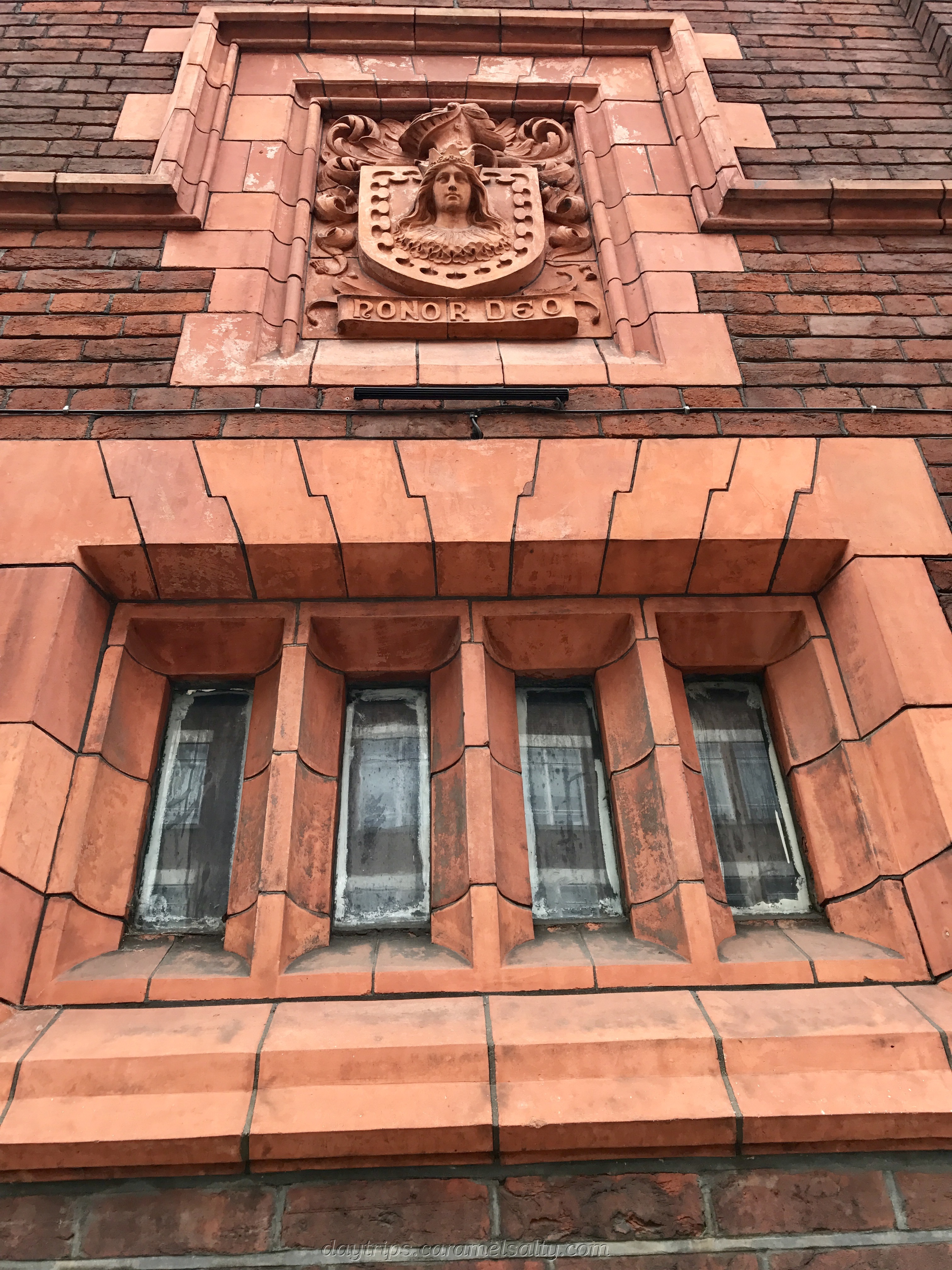 site, between what is now the Talgarth and Hammersmith Road, by Alfred Waterhouse ( of Natural History Museum fame). St Paul’s school moved from St Paul’s cathedral in the city to the countryside (and yes, Hammersmith was considered countryside in those days) from 1884 until 1968. The number 153 has long been associated with the miraculous draught of fishes recorded in St John’s gospel.
site, between what is now the Talgarth and Hammersmith Road, by Alfred Waterhouse ( of Natural History Museum fame). St Paul’s school moved from St Paul’s cathedral in the city to the countryside (and yes, Hammersmith was considered countryside in those days) from 1884 until 1968. The number 153 has long been associated with the miraculous draught of fishes recorded in St John’s gospel.
You have also probably just walked along the path of Black Bull Ditch, as it was named after the Black Bull Inn which it flowed past, where the house of the High Master of St. Paul’s School now stands.
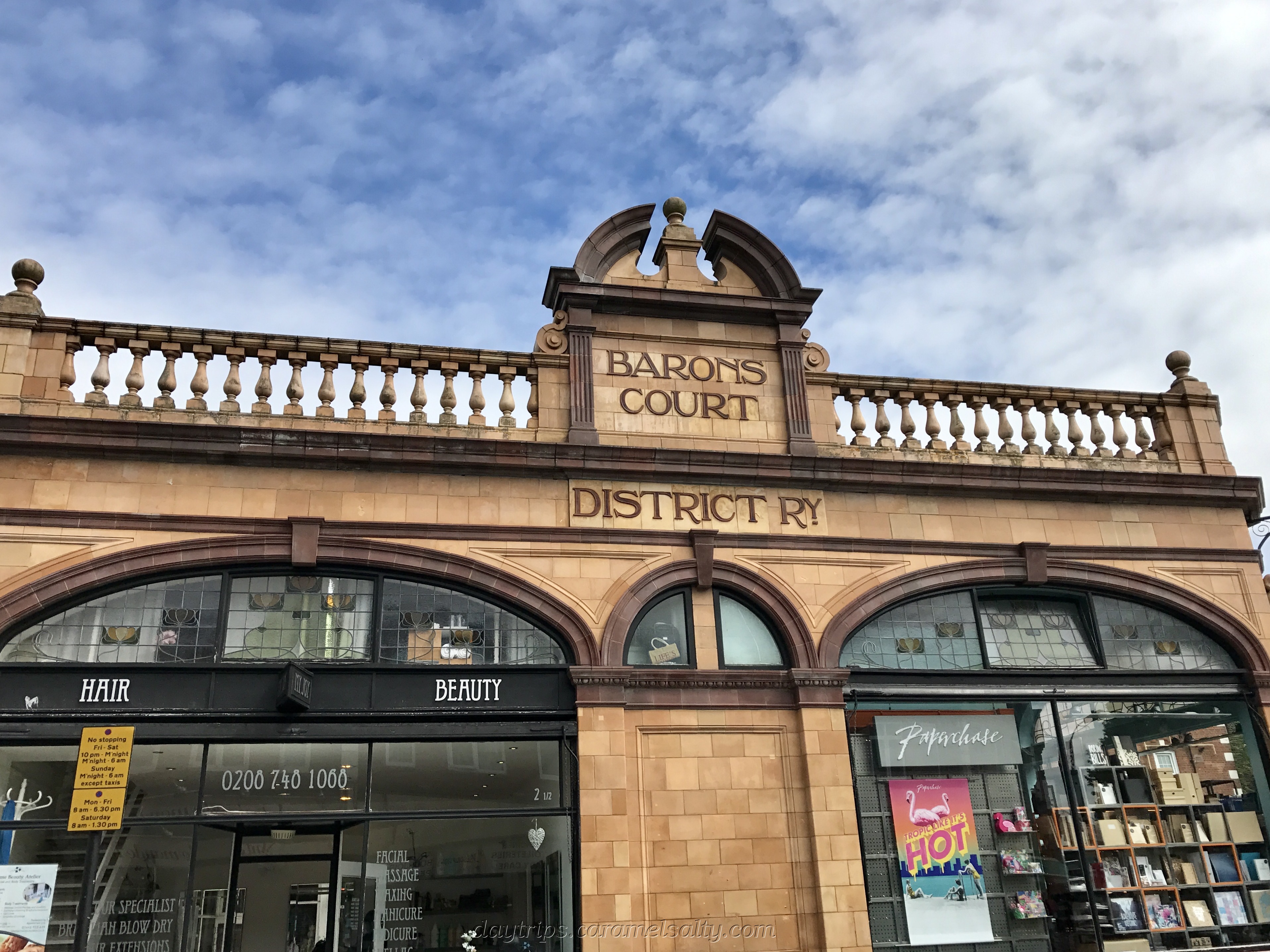 Our next destination is Margravine Cemetery. From Hammersmith Road, walk down, crossing over Talgarth Road (the A4) and onto
Our next destination is Margravine Cemetery. From Hammersmith Road, walk down, crossing over Talgarth Road (the A4) and onto  Barons Court ( no apostrophe) is now a Grade II listed building as it retains many of its original features, including terracotta facing and Art Nouveau lettering. Do also have a peep inside for the beautiful green Victorian tiles.
Barons Court ( no apostrophe) is now a Grade II listed building as it retains many of its original features, including terracotta facing and Art Nouveau lettering. Do also have a peep inside for the beautiful green Victorian tiles.
Margravine Cemetery
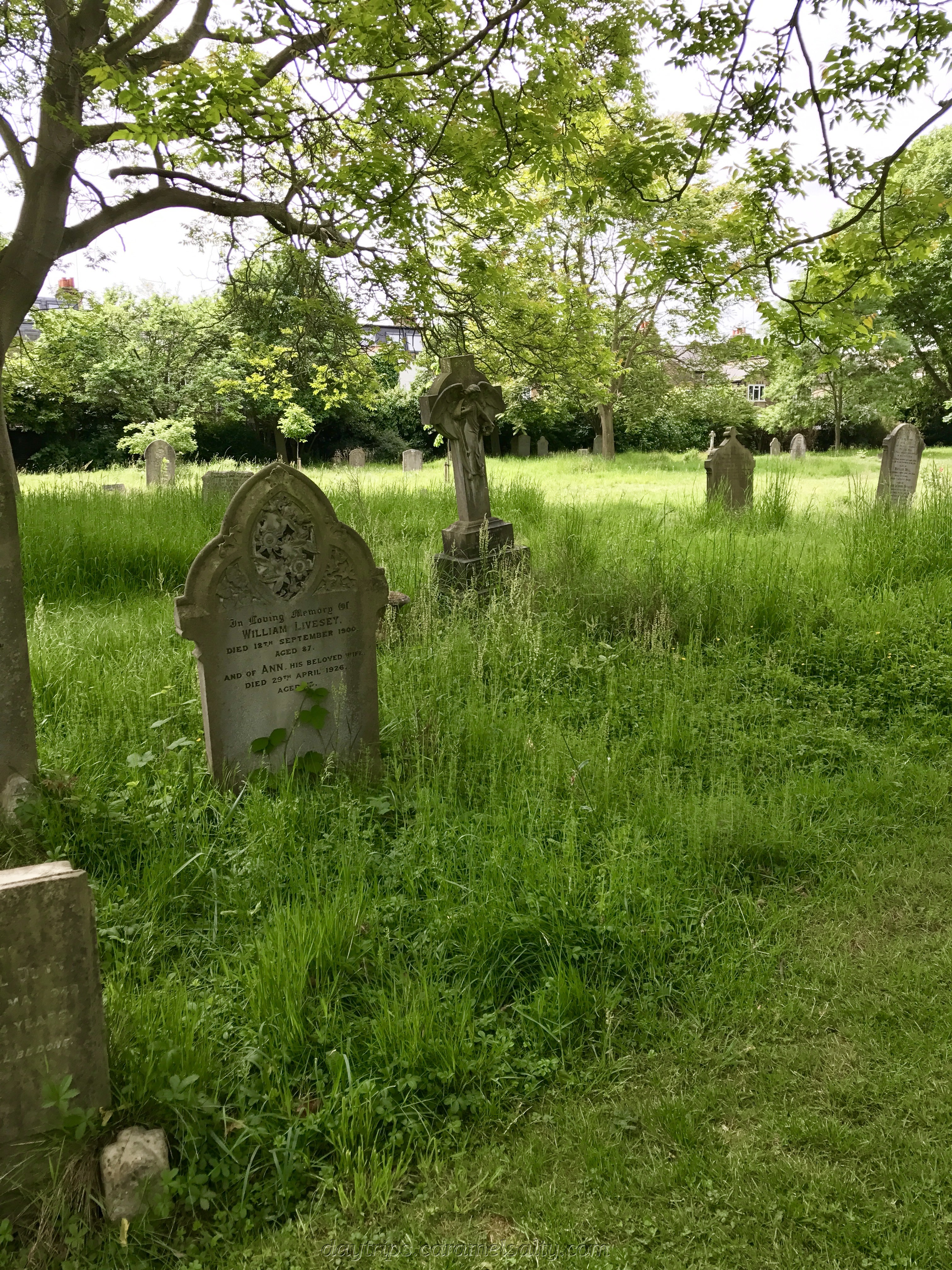 Round the back of Barons Court Station is the Margravine Cemetery. Also known as ‘Hammersmith Old’, this cemetery opened in 1869 and is behind Charing Cross Hospital. This cemetery covers 17 acres and there are many varieties of trees and wildflowers. In 1951, Hammersmith Council, concerned at its dilapidated appearance, ‘cleared-up’ the Cemetery, leaving behind the mix of gravestones and grass that we see today.
Round the back of Barons Court Station is the Margravine Cemetery. Also known as ‘Hammersmith Old’, this cemetery opened in 1869 and is behind Charing Cross Hospital. This cemetery covers 17 acres and there are many varieties of trees and wildflowers. In 1951, Hammersmith Council, concerned at its dilapidated appearance, ‘cleared-up’ the Cemetery, leaving behind the mix of gravestones and grass that we see today.
To be continued to Fulham Palace Gardens, once I stop hobbling on a bad ankle…….